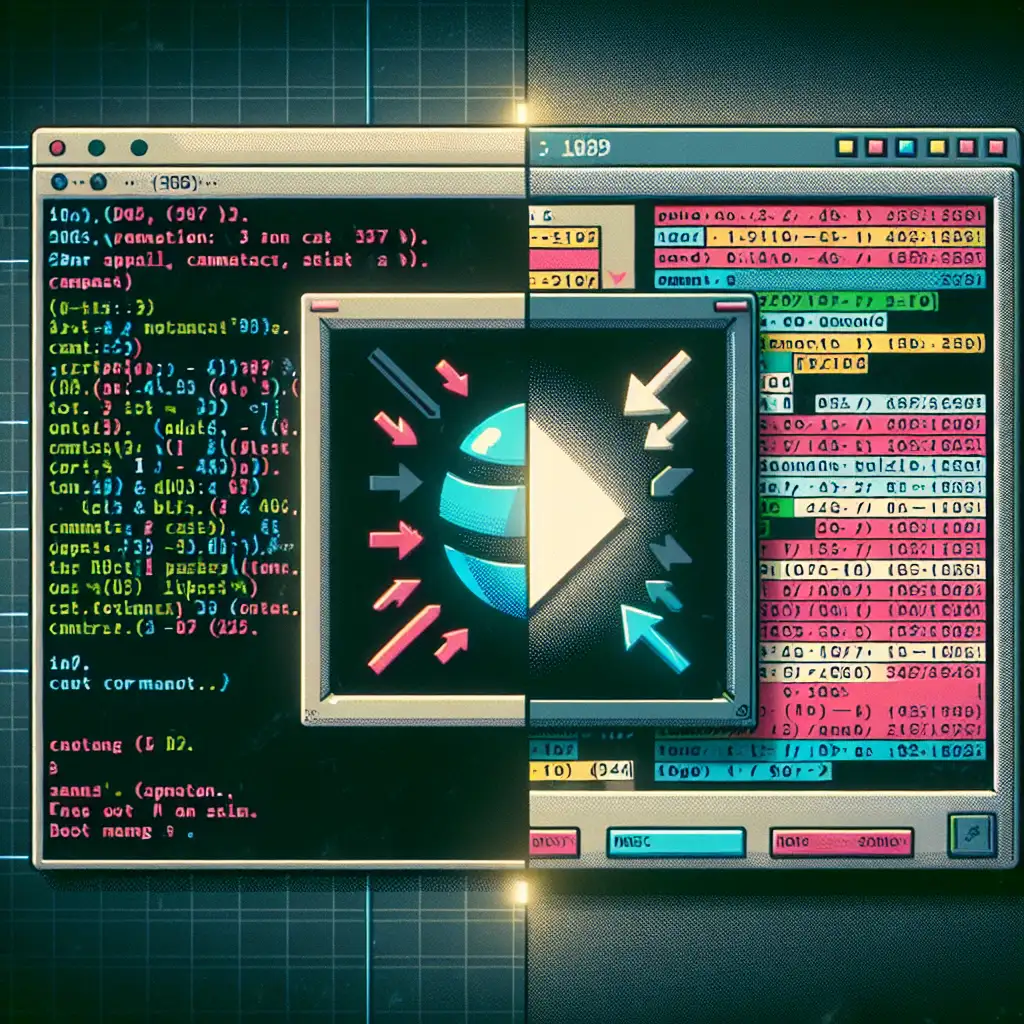Mastering DOS to Unix Command Line Transitions: Essential Techniques for Seamless Cross-Platform Operations
Most IT professionals underestimate the subtle but impactful differences between DOS and Unix commands, which can lead to costly mistakes. This guide flips the script by turning these differences into an advantage, enabling smoother cross-platform command execution.
As organizations straddle between legacy DOS environments and modern Unix-based systems, the ability to transition confidently between their command lines is more than just a nice-to-have—it’s essential. When overlooked, even small differences in how commands behave can cause errors, downtime, or data loss.
In this post, we’ll break down the core distinctions, share practical tips for navigating them, and arm you with real-world examples so you can confidently operate across both platforms without missing a beat.
Why Mastering DOS to Unix Transitions Matters
While DOS and Unix share a common ancestry in command line interfaces, their syntax conventions, file system structures, and command utilities differ notably. Professionals maintaining hybrid infrastructures or migrating scripts need to:
- Avoid common pitfalls caused by discrepancies (e.g., path specifications, command flags).
- Adapt batch workflows seamlessly.
- Improve scripting efficiency by understanding cross-platform analogs.
- Reduce operational errors that arise from incorrect assumptions.
Key Differences Between DOS and Unix Command Lines
Before diving into techniques, let’s quickly outline some foundational differences:
| Aspect | DOS/Windows | Unix/Linux |
|---|---|---|
| File Path Separator | Backslash ( \ ) | Forward slash ( / ) |
| Case Sensitivity | Case-insensitive | Case-sensitive |
| Command Prompt | C:\> | $ |
| Internal Commands | DIR, COPY, DEL, etc. | ls, cp, rm, etc. |
| Wildcards | * and ? | Same symbols but interpreted differently |
| Environment Variables | %VAR% | $VAR |
| Command switches | Usually preceded by / | Usually preceded by - or -- |
Practical Techniques for Smooth Transitions
1. Translating Common Commands
One of the fastest ways to ease transition pain is knowing direct command equivalents:
| Task | DOS Command | Unix Command |
|---|---|---|
| List directory | DIR | ls -l |
| Change directory | CD \foldername | cd /foldername |
| Copy files | COPY source dest | cp source dest |
| Delete files | DEL filename | rm filename |
| Make directory | MD dirname | mkdir dirname |
| Move/Rename files | MOVE oldname newname | mv oldname newname |
Example:
C:\> DIR C:\Projects
Equivalent to:
$ ls -l /Projects
Note: Pay attention to paths. Windows uses drive letters (C:\) while Unix uses hierarchical mounts.
2. Handling File Paths Correctly
When porting scripts or commands:
- Replace all backslashes (
\) with forward slashes (/) in paths. - Remove drive letters — map Windows drives to appropriate mount points in Unix.
Example:
DOS Path:
C:\Users\Admin\Documents
Unix Path Equivalent:
/home/admin/Documents
If using tools like Cygwin on Windows for Unix-like environments, resolving path translations happens automatically under the hood but be mindful when switching pure environments.
3. Environment Variables Syntax Differences
In DOS batch scripts:
echo %USERNAME%
In Unix shell:
echo $USER
When writing cross-platform scripts (using tools like PowerShell or compatible shells), always verify variable syntax.
4. Adapting Batch Scripts to Shell Scripts
Batch files (*.bat) use different syntax constructs than shell scripts (*.sh). For example:
DOS batch loop:
FOR %%i IN (*.txt) DO COPY %%i Backup\
Unix shell loop:
for i in *.txt; do cp "$i" Backup/; done
Understanding such flow control variations is critical when migrating automated tasks or writing documentation for teams working on both systems.
5. Leverage Cross-Platform Tools When Possible
To reduce friction between platforms consider:
- PowerShell Core: Works on Windows and Linux/macOS with consistent syntax.
- Git Bash / Cygwin: Bring Unix-like environments into Windows.
- WSL (Windows Subsystem for Linux): Run a genuine Linux environment on a Windows machine for testing or development purposes.
Adopting these can let you work with familiar commands regardless of underlying OS.
Troubleshooting Common Pitfalls
- Commands not recognized: Check if you're using DOS commands in a Unix shell or vice versa.
- Permission Denied errors: Unix has stricter file permission schemes.
- Case sensitivity issues: Be extra cautious with filename capitalization on Unix.
- Line-ending issues: Windows uses CRLF (
\r\n) while Unix uses LF (\n). This affects script execution—use tools like dos2unix when needed.
Summary Checklist for Transition Success
- Know your command equivalents — have a quick reference handy.
- Always verify path formats and adjust accordingly.
- Understand environment variable syntax differences.
- Convert batch logic carefully considering flow control changes.
- Use cross-platform shells/tools where possible to unify scripting experience.
- Test scripts after porting before deploying in production.
Mastering these practical techniques will empower you to operate confidently across both DOS and Unix environments—transforming what could be operational hurdles into smooth transitions that enhance productivity and reduce costly errors.
If this guide helped clarify your transition pain points or if you have unique tips of your own, drop a comment below! Let’s build stronger cross-platform skills together.
